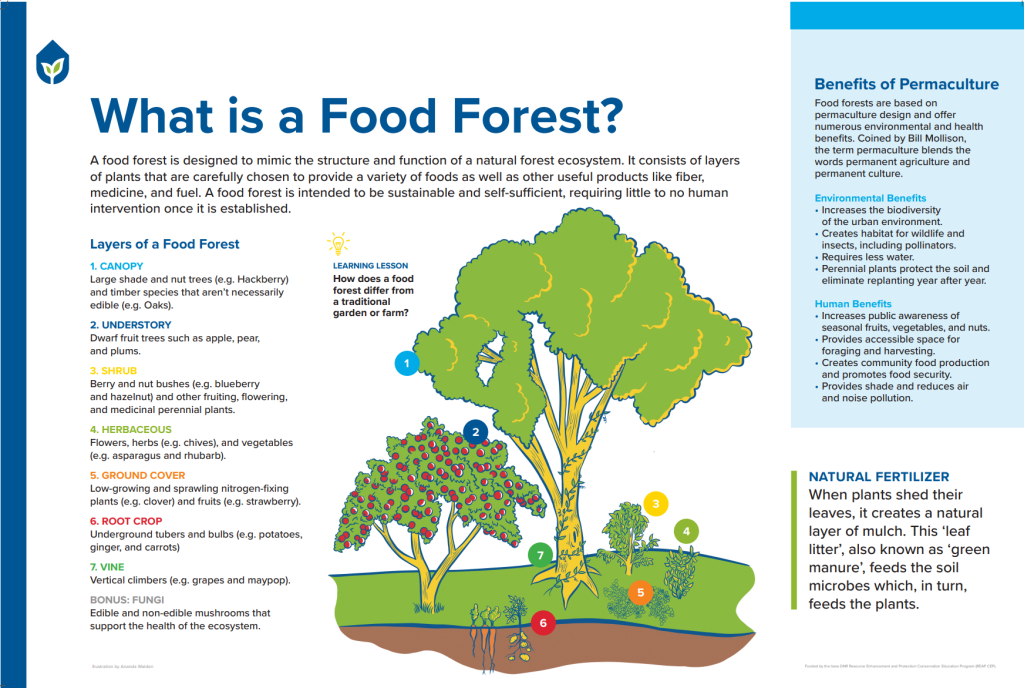What is a Food Forest?

This sign reads: “What is a food forest? A food forest is designed to mimic the structure and function of a natural forest ecosystem. It consists of layers of plants that are carefully chosen to provide a variety of foods as well as other useful products like fiber, medicine, and fuel. A food forest is intended to be sustainable and self-sufficient, requiring little to no human intervention once it is established.
Learning lesson. How does a food forest differ from differ from a traditional garden or farm?” The sign has a drawing of a section of the food forest. It contains a large tree, a smaller tree with fruit, a small shrub, a vine, plants that grow largely underground, and other small, herbaceous plants. This drawing is numbered and labeled to identify the different layers of a food forest.
The first layer is the canopy, which includes “large shade and nut trees (like Hackberry) and timber species that aren’t necessarily edible (like Oaks).” The second layer is the understory. It contains “Dwarf trees such as apple, pear, and plums.” The third layer is the shrubs, which includes “berry and nut bushes (like blueberry and hazelnut) and other fruiting, flowering, and medicinal perennial plants.” The fourth layer is the herbaceous plants. It contains “flowers, herbs (like chives) and vegetables (like asparagus and rhubarb).” The fifth layer is ground cover, which includes “low-growing and sprawling nitrogen-fixing plants (like clover) and fruits (like strawberry).” The sixth layer is root crop. It contains “underground tubers and bulbs (like potatoes, ginger, and carrots).” The seventh layer is vines, which includes “vertical climbers like grapes and maypop.” The final, bonus layer is fungi. Fungi include both edible and non-edible mushrooms that support the health of the ecosystem.
The top right corner of the sign has a blue box that states: “Benefits of permaculture. Food forests are based on permaculture design and offer numerous environmental and health benefits . Coined by Bill Mollison, the term permaculture blends the words permanent agriculture and permanent culture.
Environmental benefits. Increases the biodiversity of the urban environment. Creates habitat for wildlife and insects, including pollinators. Requires less water. Perennial plants protect the soil and eliminate replanting year after year. Human benefits. Increases public awareness of seasonal fruits, vegetables, and nuts. Provides accessible space for foraging and harvesting. Creates community food production and promotes food security. Provides shade and reduces air and noise pollution.”
Below this blue box, the sign states: “Natural fertilizer. When plants shed their leaves, it creates a natural layer of mulch. This “leaf litter,” also called “green manure,” feeds the soil microbes which, in turn, feeds the plants.
